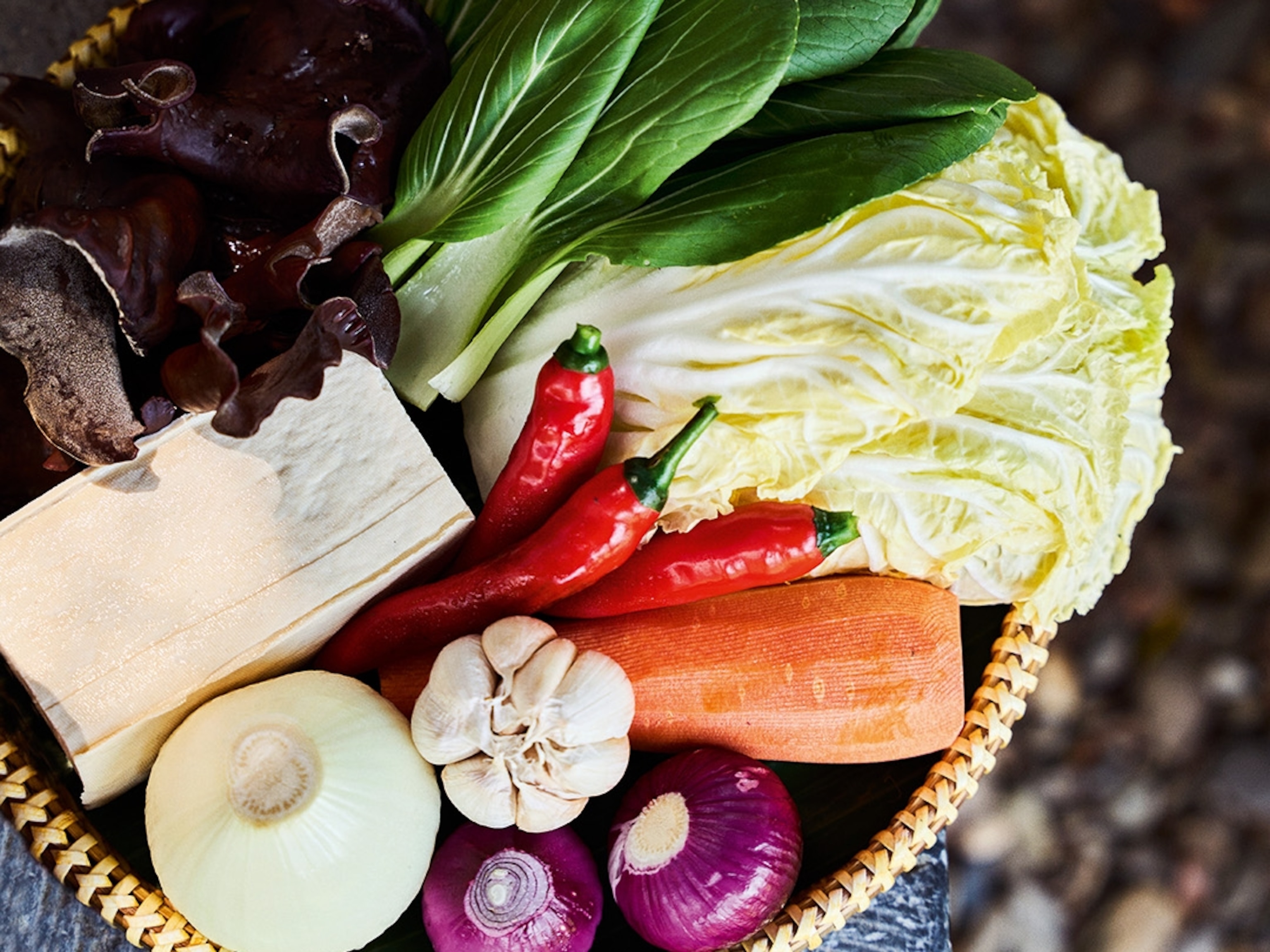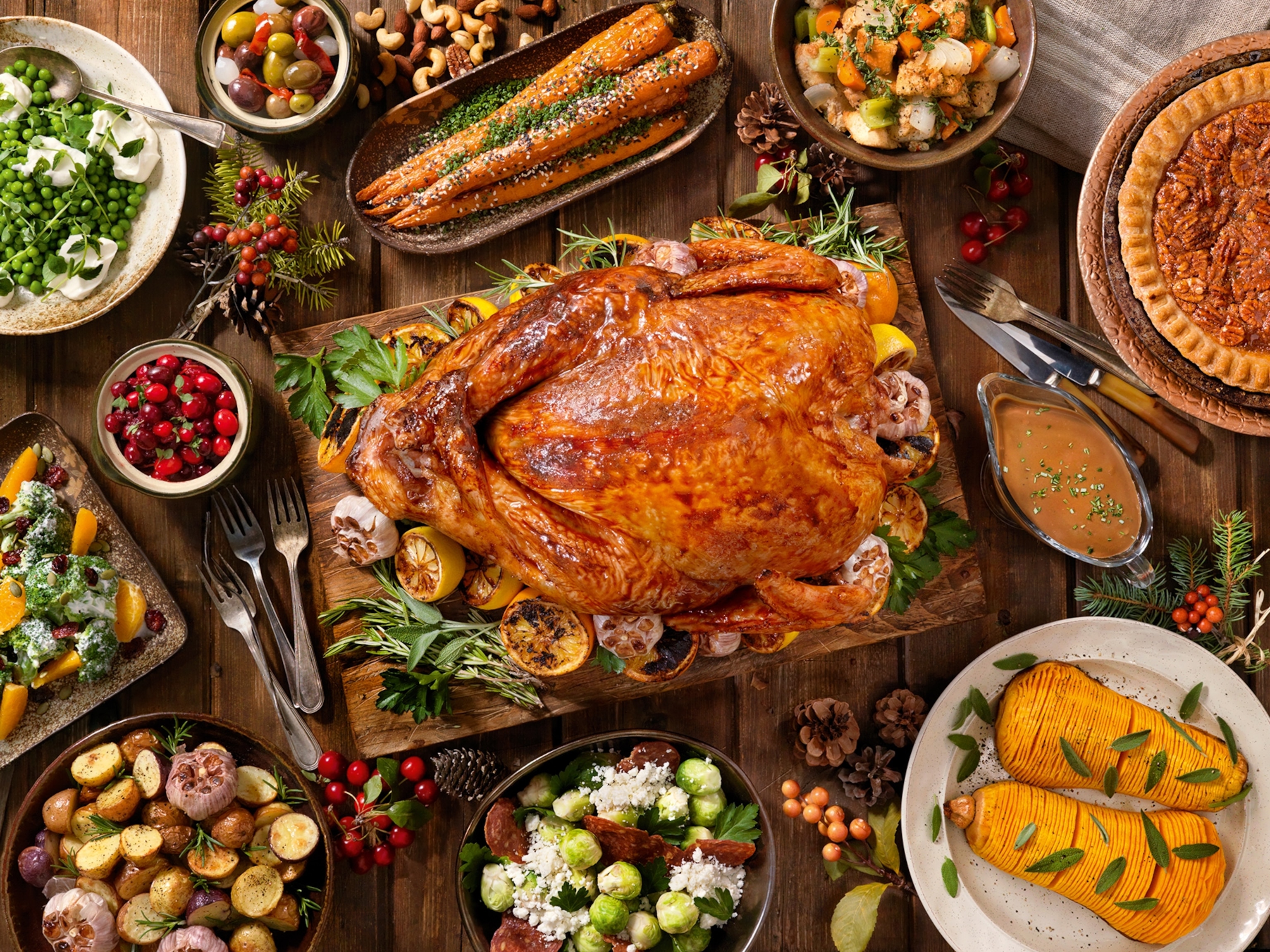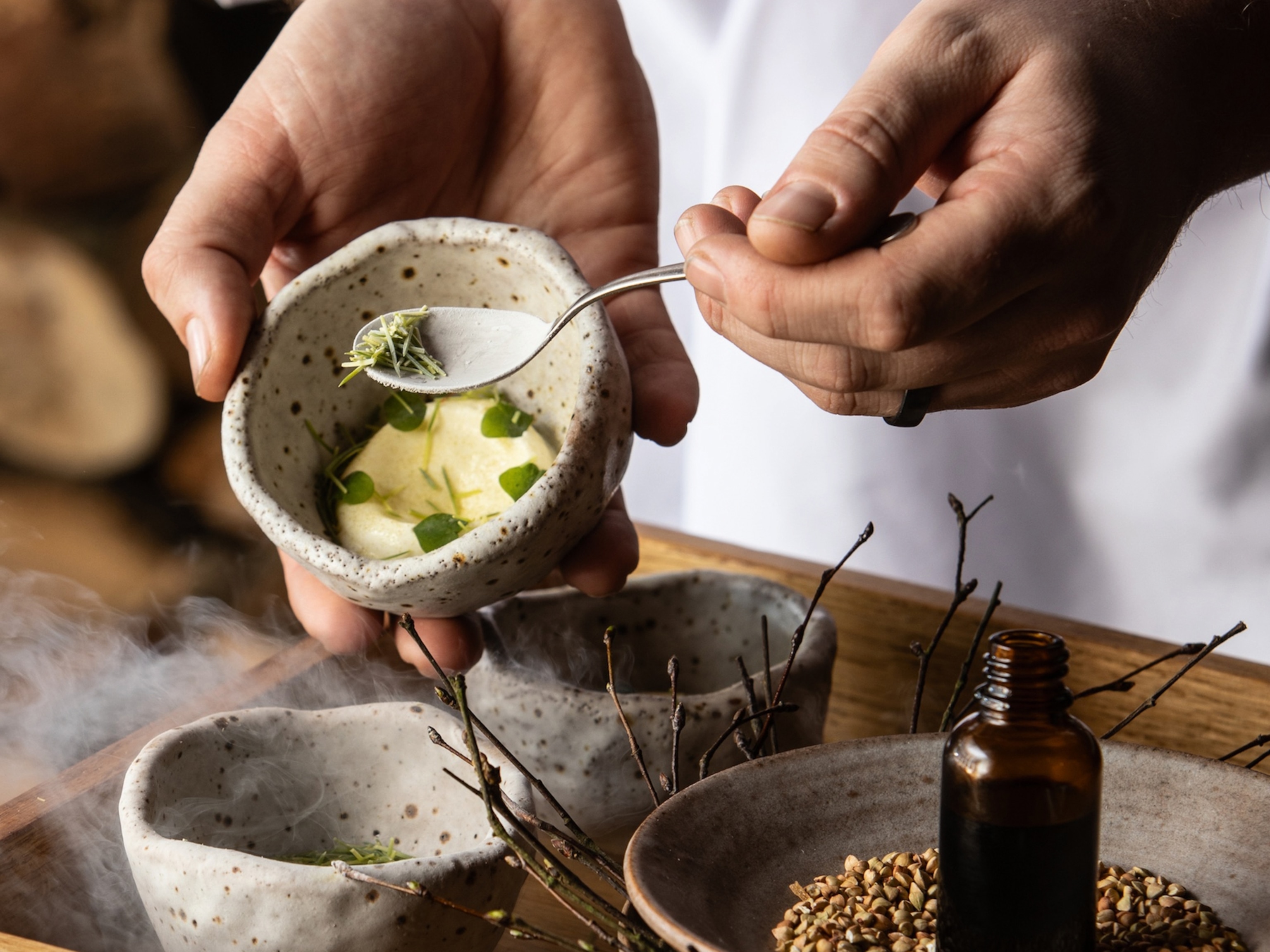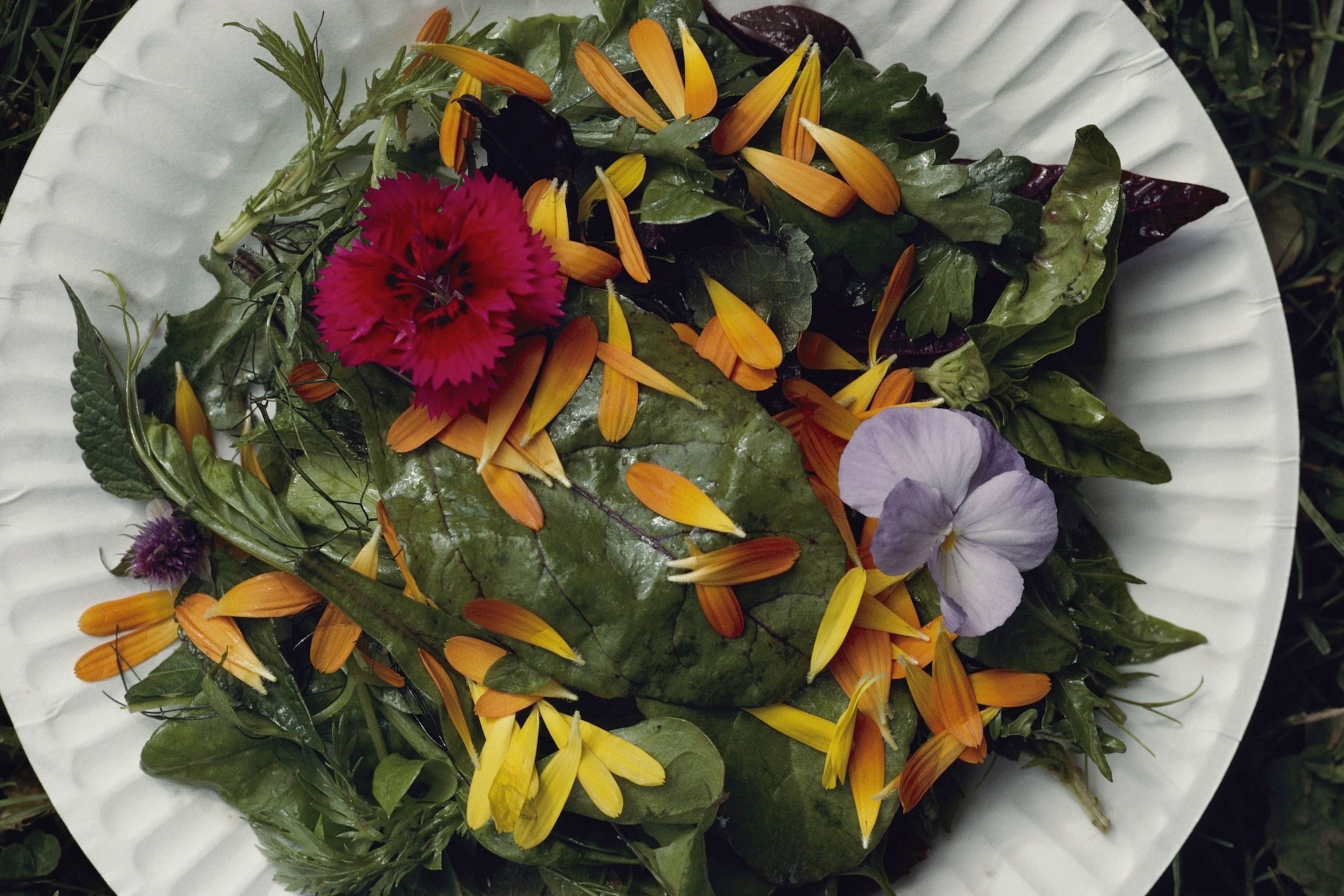
Elegantly Dressed Salads Were Once Quite Fashionable
The green salad, tossed with oil, vinegar, and salt, has been on the human table at least since the days of the Greeks and Romans, and—just as we still bicker over when it’s best to eat it, before the main meal or after—the ancients couldn’t make up their minds either.
Physicians Hippocrates and Galen, on the grounds that salad enhanced digestion, pitched for salad first; a host of gourmets, on the grounds that vinegar dressings made wine taste awful, insisted on salad last.
Others argued that salad should be eaten just before going to bed, since lettuce, traditionally, was touted as a soporific. Its putative drowsy-making properties come from the distinctive milky juice that can be seen oozing from the ends of cut lettuce stems—hence Lactuca, the scientific name for lettuce, from the Latin lac, meaning milk. Chemically speaking, this juice is a latex, a complex mix of proteins, alkaloids, starches, sugars, tannins, resins, and gums that coagulate when exposed to air. About 10 percent of flowering plants make latexes, most famously the useful rubber tree, the notorious opium poppy, and the sapodilla, whose dried latex, chicle, was the basis of the first chewing gums.
While the latex of modern cultivated lettuce doesn’t pack much of a sleep-inducing punch, that of wild lettuce—Lactuca virosa, the prickly and bitter ancestor of today’s tasty salad-bowl leaves—contains terpene-based alcohols reputedly potent enough to put people out for the night. Dried balls of wild-lettuce latex were used to treat insomnia in medieval England and colonial America, and a wild-lettuce extract called lactucarium was used as a sedative in hospitals up through World War II.
Championing Salad and Vegetarianism
A bedtime bowl of soporific salad, on the other hand, had its drawbacks: historically, lettuce also has a reputation as an anti-aphrodisiac. The ancient Greeks worried that lettuce-eating led to impotence; and Dioscorides, first-century physician to Nero’s legions, promoted it for lonely enlisted men, whose dreams might otherwise be filled with “libidinous images.” Seventeenth-century scholar and diarist John Evelyn, author of Acetaria: A Discourse of Sallets (1699), claimed that salad greens had “beneficial influences on morals, temperance, and chastity.”
Evelyn’s Acetaria is a landmark in salad history, the first book in English solely devoted to raw veggies with dressing. Evelyn hadn’t meant to publish it as a book. Acetaria was originally intended as a mere chapter in a far larger work to be titled Elysium Britannicum, or The Royal Garden. Evelyn, who never completed it, had planned a gargantuan gardening compendium, crammed with information on everything from compost piles to bowling greens, orangeries, garden statuary, and the proper design of cemeteries.
Acetaria is not only a treatise on salad, but a 17th–century plug for vegetarianism. Those living on “Herbs and Roots,” Evelyn writes, “arrive to incredible Age, with constant Health and Vigour.” Such a diet was also enjoyed by the rich and famous: the Emperor Tacitus, he notes, was “a great friend to Lettuce,” and Nicomedes, King of Bithynia, was partial to turnip, carved in the shape of a fish, and dressed with oil, salt, and pepper. Evelyn then provides a helpful alphabetical list of 73 potential salad ingredients (from Alexanders and Artichaux to Wood-sorrel), along with assorted salad and salad dressing recipes.
Despite his hefty and varied list of ingredients, Evelyn is picky about what constitutes a salad. By “Sallet,” he means “a particular Composition of certain Crude and fresh Herbs, such as usually are, or may safely be eaten with some Acetous Juice, Oyl, Salt, &c., to give them a grateful Gust and Vehicle.” In other words, Evelyn’s salads contained no meats and no fruits, which was a departure from the popular salads of his time.
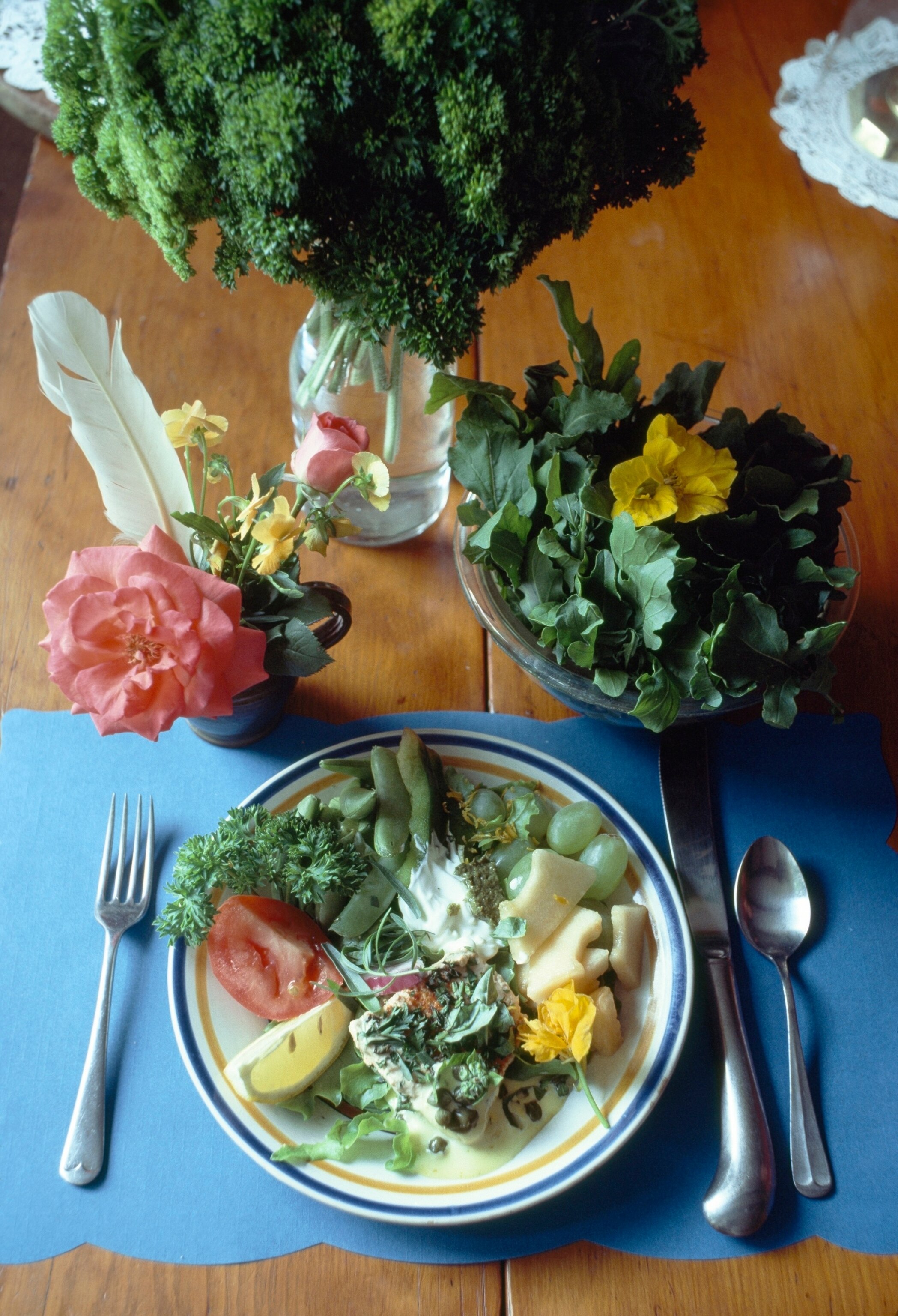
Making Salad the Right Way
The 17th century was the age of “grand salads,” elaborate kaleidoscopic arrangements of dozens of ingredients that were the precursors to today’s much less ambitious chef’s salads. One such, from Robert May’s The Accomplisht Cook (1660), calls for at least 18 different components, among them pickled oysters, figs, and potatoes, all to be arranged on a platter in pleasing patterns:
“Take a cold roast capon and cut it into thin slices square and small, (or any other roast meat as chicken, mutton, veal, or neats tongue) mingle with it a little minced taragon and an onion, then mince lettice as small as the capon, mingle all together, and lay it in the middle of a clean scoured dish. Then lay capers by themselves, olives by themselves, samphire by itself, broom buds, pickled mushrooms, pickled oysters, lemon, orange, raisins, almonds, blue-figs, Virginia Potato, caperons, crucifix pease, and the like, more or less, as occasion serves, lay them by themselves in the dish round the meat in partitions. Then garnish the dish sides with quarters of oranges, or lemons, or in slices, oyl and vinegar beaten together, and poured on it over all.”
Evelyn’s salads, heavy in leafy greens, were messier, more akin to what we know as tossed salads or mesclun salads. Even so, he was fussy about their preparation, directing that “Sallet Herbs” be gathered in a “neatly made Withy-Dutch-Basket” (helpfully divided in partitions), then washed, drained, cut with a silver (not steel) knife, and served in a porcelain dish. He also devotes several paragraphs to the skills necessary for the “accomplish’d Sallet-Dresser,” notably the ability to choose and combine oils, vinegars, salt, and herbs in such proportions that the end result is neither over-powering nor insipid.
To be an accomplished Salad Dresser was no mean feat, requiring—according to Andrew Kirwin, author of Host and Guest: A Book About Dinners, Dinner-Giving, Wines, and Desserts (1864)—a “patient and discreet man” or “a painstaking and careful man or woman.” By reputation, the best of these were French. Famed gastronome Jean Anthelme Brillat-Savarin in The Physiology of Taste (1825) tells the wonderful rags-to-riches tale of a young French émigré named d’Albignac who made his fortune as a salad-dresser. His career began at a London tavern where he was enjoying a solitary roast-beef dinner. Guests at a neighboring table (“five or six young men of good families”), discovering that he was a Frenchman, begged him to do them the favor of dressing their salad. He did, and the result was so successful that he was next asked to dress a salad at one of the best houses in Grosvenor Square.
Soon, nicknamed “the fashionable salad-maker,” d’Albignac had acquired a servant and a carriage in which he traveled from dinner party to dinner party, toting a fitted mahogany case filled with salad-dressing ingredients: perfumed vinegars, oils (“with or without the taste of fruit”), soy, caviar, truffles, anchovies, ketchup gravy, and egg yolks. Eventually, busily dressing salads, he amassed a fortune of 80,000 francs, with which he returned to France and presumably lived happily ever after.
Salad Dressing, an Art Form
Salad, through the 19th century, was regarded as an upper-class meal. (The hoi polloi, in its place, got pickles.) Mary Lincoln, author of the best-selling Mrs. Lincoln’s Boston Cook Book: What To Do and What Not To Do in Cooking (1884), stated that salads should be dressed and mixed at the dinner table by the lady of the house herself. “Surely no lady who has a hand and knows how to use it deftly and gracefully would be willing to relinquish this most fascinating part of the dinner service,” writes Mrs. Lincoln—doubtless intimidating a generation of hostesses, who must have longed for the services of M. d’Albignac. Such salad social pressure may have contributed to the turn-of-the-century popularity of the gelatin salad, surely a low point in the history of salads.
Today, with salad available to all, the average American still doesn’t eat nearly enough of it. A 2010 report from the Centers for Disease Control and Prevention (CDC) found that just 26 percent of American adults eat their recommended daily allotment of vegetables—and that in spite of easy, ready-to-eat, bagged salads, which are now an annual $3 billion business.
The bright spot on the salad horizon appears to be gardening. According to the National Gardening Association, 35 percent of American households now grow gardens—up 17 percent from 2008. Researchers at UC Berkeley, studying kids participating in the “edible schoolyard” program in which gardening is an integral part of the school curriculum, found that the gardeners ate one and a half more daily servings of fruits and vegetables than kids who weren’t involved in the program.
Perhaps picking it fresh is the secret. Just as John Evelyn said in 1699.
References
- Evelyn, John. Acetaria: A Discourse of Sallets. (1699). Brooklyn Botanic Garden, 1937.
- Sitwill, William. “Salad Dressing” in A History of Food in 100 Recipes. Little, Brown, and Company, 2013.






